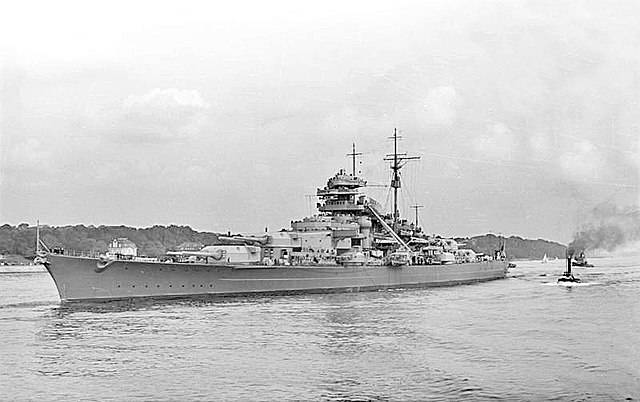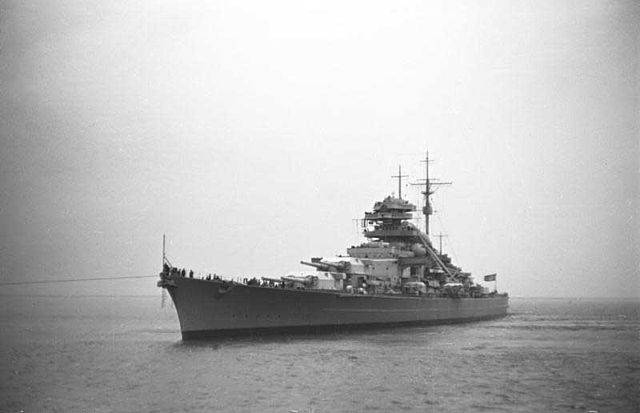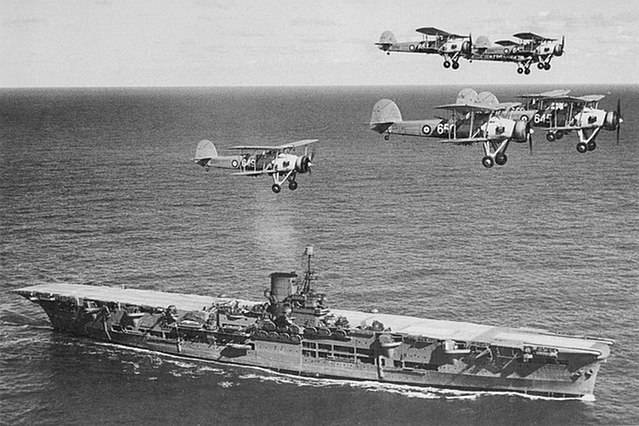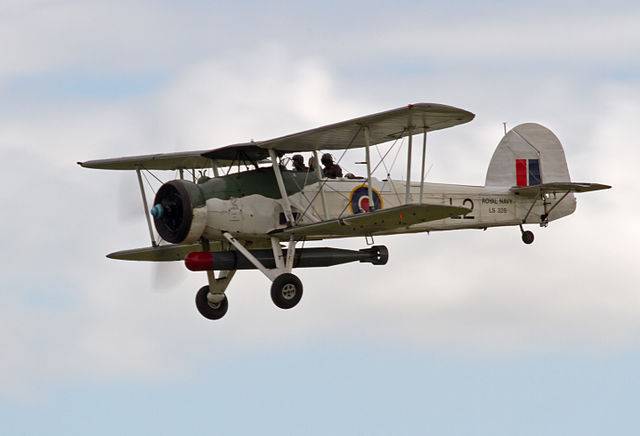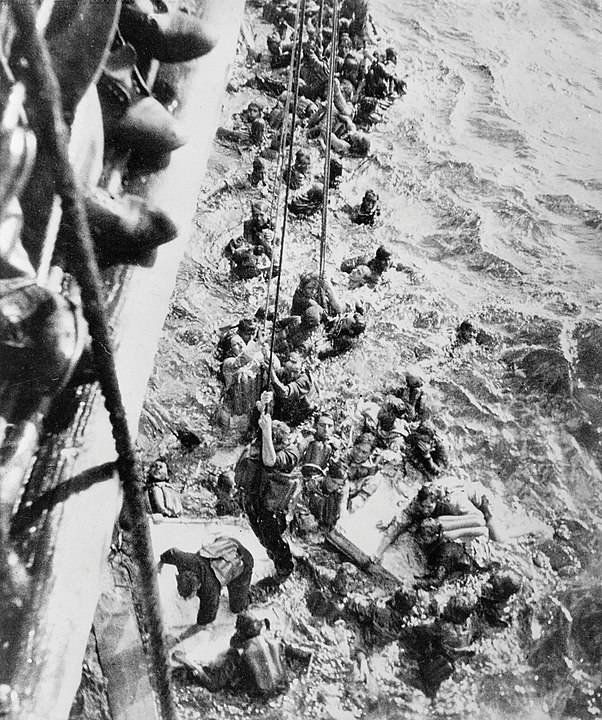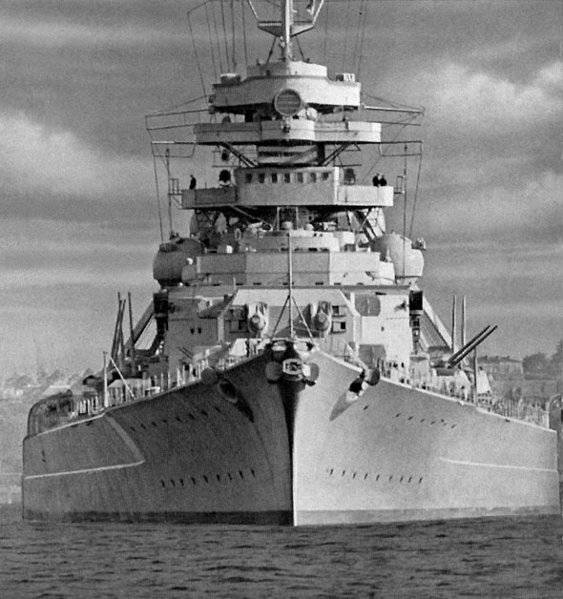
Le Bismarck était le premier cuirassé de la classe Bismarck construit pour la Kriegsmarine sous l'Allemagne nazie. Nommé d'après le chancelier allemand Otto von Bismarck qui fut l'un des architectes de l'unification allemande au XIXe siècle, il fut, avec son navire-jumeau le Tirpitz, le plus grand navire de guerre utilisé par l'Allemagne.
Le Bismarck fut construit dans le chantier naval Blohm & Voss de Hambourg entre juillet 1936 et février 1939.
Le Bismarck avait une longueur hors-tout de 251 mètres, une longueur de flottaison de 241,6 mètres, un maître-bau de 36 mètres et un tirant d'eau en charge de 9,9 mètres. Avec son navire-jumeau le Tirpitz, il était le plus grand navire construit par l'Allemagne (mais non du monde : au tout premier rang se trouvaient le 'Yamato' (1937) et le 'Musashi' (1938), cuirassés japonais). Son déplacement à pleine charge de 50 300 tonnes surpassait celui de tous les autres cuirassés européens. Seul le HMS Vanguard, mis en service après la Seconde Guerre mondiale, le dépassera.
Le Bismarck était propulsé par trois hélices mues par trois turbines à vapeur Brown-Boveri (Blohm & Voss) alimentées par douze chaudières à mazout Wagner développant une puissance de 111,98 MW et qui procurait au bâtiment une vitesse maximale de 29 nœuds (53,7 km/h). Aux essais, la vitesse maximale atteinte fut, selon les sources, de 30,01 nœuds (55,6 km/h) ou de 31,1 nœuds (57,6 km/h).
Bismarck was the first Bismarck-class battleship built for the Kriegsmarine under Nazi Germany. Named after German Chancellor Otto von Bismarck who was one of the architects of German unification in the 19th century, she was, along with her sister ship the Tirpitz, the largest warship used by Germany.
The Bismarck was built in the Blohm & Voss shipyard in Hamburg between July 1936 and February 1939.
The Bismarck had an overall length of 251 meters, a waterline length of 241.6 meters, a beam of 36 meters and a loaded draft of 9.9 meters. Together with her sister ship the Tirpitz, she was the largest ship built in Germany (but not in the world: in the very first row were the 'Yamato' (1937) and the 'Musashi' (1938), Japanese battleships) . Her fully loaded displacement of 50,300 tons surpassed that of all other European battleships. Only the HMS Vanguard, commissioned after the Second World War, will exceed it.
The Bismarck was propelled by three propellers driven by three Brown-Boveri steam turbines (Blohm & Voss) fed by twelve Wagner oil-fired boilers developing an output of 111.98 MW and which gave the vessel a maximum speed of 29 knots (53, 7 km/h). During the tests, the maximum speed reached was, depending on the source, 30.01 knots (55.6 km/h) or 31.1 knots (57.6 km/h).


